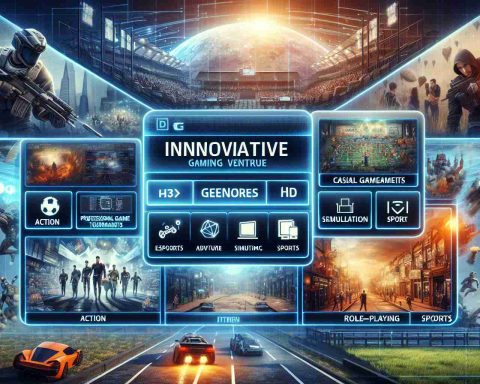As the landscape of artificial intelligence evolves, organizations face a pressing issue: the overwhelming reliance on Nvidia for graphics processing units (GPUs). This state of dependence is reshaping how enterprises approach their AI strategies, pushing aside concerns about vendor lock-in. With Nvidia holding a dominant position in the AI chip sector, companies find themselves with limited choices, necessitating a focus on maximizing their use of Nvidia’s technology.
With this dependency acknowledged, the next step for enterprises is clear: they must tailor their AI initiatives to their specific needs. Organizations frequently face a pivotal choice between leveraging in-house talent and investing in external resources to achieve their goals more efficiently. As time goes on, many are moving toward outsourcing as a viable solution to enhance productivity and accelerate project timelines.
This brings forth another vital decision: selecting the right outsourcing partner. Enterprises must navigate a landscape filled with various options, from established firms like Accenture and Deloitte to specialized boutique agencies focusing on generative AI. Each choice carries implications for how quickly and effectively an organization can harness AI technology for its unique requirements.
In this context, assessing partnerships, such as the collaboration with Accenture, becomes crucial for companies looking to thrive in an increasingly AI-driven environment.
Maximizing AI Strategies: Tips and Life Hacks
As businesses continue to adapt to the dynamic realm of artificial intelligence (AI), there are several strategies and hacks that can help organizations leverage their resources more effectively. Here are some essential tips and interesting facts to consider when navigating this ever-evolving landscape.
1. Understand Your AI Needs
Before partnering with an outsourcing firm or investing in new technology, conduct a thorough analysis of your organization’s unique AI requirements. This allows you to identify the right type of AI solutions that align with your goals, ensuring that investments are focused and strategic.
2. Leverage Existing Infrastructure
Instead of overhauling your entire tech setup, consider examining your existing infrastructure for ways to integrate AI solutions. For example, using Nvidia GPUs in tandem with your current systems can improve processing speeds without significant initial investments.
3. Emphasize Training and Development
As AI technologies advance, so should your team’s skills. Invest in training programs that empower your staff with the latest AI knowledge. Not only does this enhance productivity, but it also fosters a culture of continuous learning within the organization.
4. Explore Diverse Outsourcing Options
When selecting an outsourcing partner, go beyond the well-known firms. Consider boutique agencies that specialize in your specific area of interest, such as generative AI. These smaller firms often bring innovative approaches and tailored solutions to the table.
5. Establish Clear Communication
When working with external partners, transparency is crucial. Set clear goals, expectations, and communication protocols to ensure all parties are aligned. Regular updates can help build trust and facilitate smoother collaborations.
Interesting Fact: The Rise of Alternative AI Technologies
While Nvidia currently dominates the GPU market, alternative technologies and providers, such as AMD and Intel, are making strides in AI-specific hardware. Keeping an eye on emerging competitors can open up new opportunities for diversification in your AI strategy.
6. Monitor Trends and Innovations
Stay informed about the latest developments in AI and machine learning. Resources like industry reports, webinars, and conferences can provide invaluable insights that keep your organization ahead of the curve.
7. Measure Success and Iterate
Lastly, it is crucial to measure the success of your AI initiatives. Use key performance indicators (KPIs) to determine what is working and what isn’t. Don’t hesitate to pivot your strategy based on findings; flexibility is key in an AI-driven landscape.
Conclusion
Navigating the complexities of AI implementation can be challenging, but with a clear strategy in place, organizations can harness the power of technology to their advantage. By understanding their unique needs, investing in the right partnerships, and fostering an adaptable culture, businesses can thrive in an increasingly AI-centric environment.
For more insights on enhancing your organization’s AI capabilities, visit Accenture or Deloitte.

















